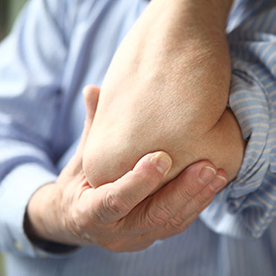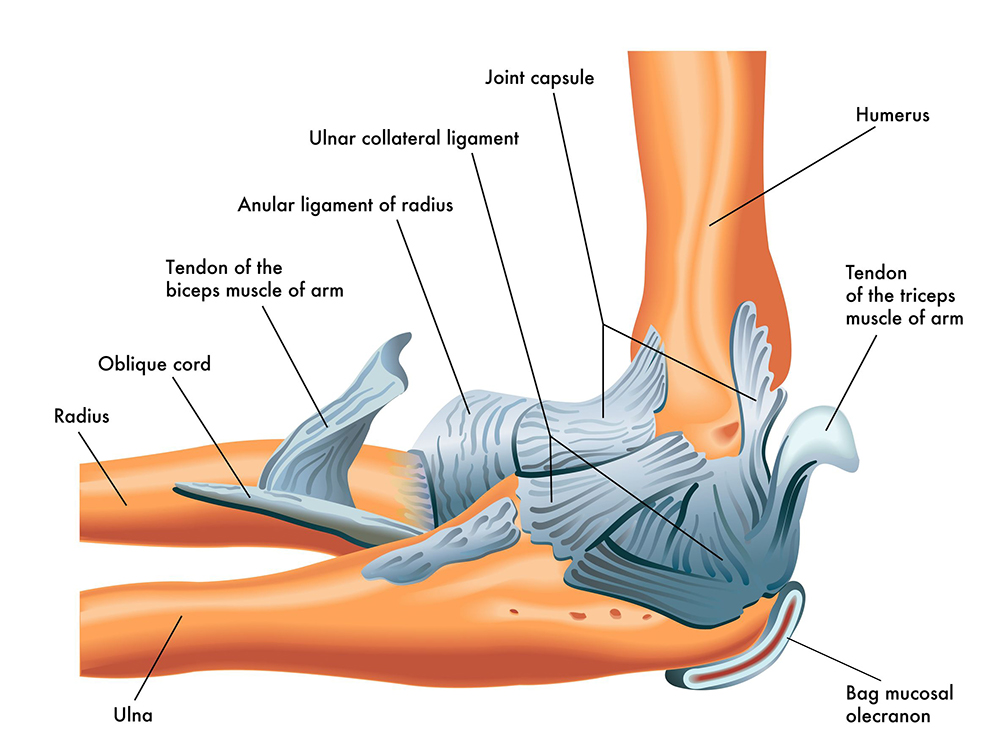Elbow Tendonitis: Symptoms, Causes, and Treatment
You’re probably more familiar with elbow tendonitis than you think. Elbow tendonitis — commonly known as tennis elbow or golfer’s elbow — is inflammation of the connective tendons that attach your elbow to the muscles of your forearm. Despite their names, anyone can get these conditions, athlete or not.

Pinpointing the cause of your elbow tendonitis can be surprisingly difficult, as its symptoms sometimes appear in the wrist or shoulder. An orthopedic elbow specialist can diagnose your condition. They can give you treatment options to use at home and help you understand how to avoid reinjury.
If your tendonitis isn’t resolved with more conservative home treatment or exercises recommended by your specialist, you could need surgery.
Top Causes of Elbow Tendonitis
Despite our awareness of tennis and golfer’s elbow, these conditions are surprisingly uncommon, with only 1 – 3% of adults receiving these diagnoses each year. Most sufferers are between 30 and 50 years of age.
Elbow tendonitis is a repetitive use injury typically caused by gripping objects using the thumb and first two fingers. Hence the names tennis elbow (lateral epicondylitis) and golfer’s elbow (medial epicondylitis) come from the way you hold a racquet or club.
The repetitive motions stress your tissues and cause elbow tendons to become irritated and inflamed. Tiny tears in these tendons can also occur.
Certain athletes are more likely to get elbow tendonitis. Individuals with careers or hobbies involving repetitive movements are disproportionately affected as well:
- Butchers
- Painters
- Carpenters
- Plumbers
- Those frequently using a computer mouse
- Weight lifters
Poor form makes injury more likely. See a sports medicine doctor to correct your technique and avoid reinjury.
Pre-existing injuries or chronic issues in the elbow can also lead to tendonitis, including dislocation, sprain, arthritis, or bursitis.
Diagnosis
Your orthopedic elbow specialist can determine what activity or condition is causing your pain. Diagnosis of tendonitis is often possible through a simple physical exam.
Your doctor may also need to take an x-ray or use a CT scan or MRI to rule out corresponding injuries or underlying conditions, however.

Six Symptoms of Elbow Tendonitis
If you’re suffering from elbow tendonitis, you will likely have some or all of the following symptoms:
- Pain and tenderness in your elbow, often centered around where the tendons of the forearm attach to the elbow
- A burning sensation in the painful area
- Stiffness in the elbow, often worse in the morning or at night
- Pain when using your hand or arm, impacting your ability to grip or lift items
- Reduced range of motion in the affected arm
- Tingling in the hand or arm
Even though the offending issue may be in the elbow, the pain may actually be worse when you’re using your hands. Because your muscles, tendons, and nerves run through your arm, the pain can extend into your arm, wrist, and hand. It can be difficult to shake hands, grip everyday objects (like a coffee cup or doorknob), or lift things.
How to Treat Elbow Tendonitis at Home
With devotion and diligence, you may be able to treat your injury at home over a period of weeks or months. The goal is to give the injury time to heal and minimize inflammation.
To treat your elbow tendonitis, start with rest. Continuing to use the injured arm in the same manner as caused the injury will only exacerbate the injury and lengthen the time needed to heal.
Ice the painful areas (use ice or an ice pack wrapped in a light towel) for 20 minutes, 3 – 4 times per day. Over-the-counter non-steroidal anti-inflammatory medications like aspirin and ibuprofen can help alleviate the pain.
Consider an elbow brace as a means to provide tight compression just below the elbow to help with healing and manage pain.
If your arm, elbow, or wrist pain isn’t improving with the above measures, make sure you check in with an orthopedic elbow specialist.
What Does a Doctor Do for Elbow Pain?
Your orthopedic specialist may give you a corticosteroid shot to help minimize inflammation and encourage healing.
They often recommend exercises to help regain strength and mobility as you heal. Go slowly and build up gradually.
A sports medicine doctor helps correct issues with your form so you don’t reinjure yourself with poor technique.
If you have a severe case — with symptoms not improving after a couple of months of treatment — surgery may be necessary to remove the damaged tendon.
Elbow Tendonitis Surgery
Only a small percent of cases require surgery, but the procedure has a high success rate. Work with your orthopedic specialist to determine the proper treatment to heal, regain mobility, and avoid repeat injury.
If you are experiencing elbow pain and have questions for our orthopedic specialist, please contact us. We’re happy to assist you in any way we can or schedule a consultation with our hand, elbow, and wrist specialist.

7 Comments
Permalink
WHERE TO BUY A RELIABLE ELBOE BRACE!
Permalink
We have DME in our office that we recommend and prescribe to patients. Your local orthopedic clinic likely does as well. If you don’t want to go that route, sometimes Walgreens or Amazon has a few good options.
Permalink
Hi, thanks yes my Elbow is very much in pain especially when I wake up and when I go to sleep also when I get dressed too the pain is like a needle prick well hope to hear from you, Anthony.
Permalink
Hi Anthony,
Elbow pain when you sleep could be due to repeated compression of the nerves that run along your elbow. This can happen if you bend the elbow while sleeping on your side. This is just one possibility of elbow pain though. You would need to see an Orthopedic Upper Extremity Specialist. You can provide them with more in-depth information, and in turn they can provide you with a proper diagnosis and treatment plan.
Permalink
1979, I worked so hard back in my 20s. In the late 1990s, I had an injection once on my elbow with some cortisone right in the office, and the next day, it was gone. I didn’t have to go back on the second trip. I see and read it gives so many options, like going to therapy, exercising yourself, and more doctors, etc. It is terrible; it wants you to back and forth with money wasted. Just my opinion. I have awful shoulder tendonitis, and on Sept. 21, 2022, I asked the doctor for a shot; she refused. I am shocked. Every night, I cannot sleep and wake up with pain plus migraine headaches. I see everything has changed with doctors and insurance. No doctors want to get involved with thing shot and pain.
Permalink
I was attacked by a dog a few weeks ago he grabbed me by the elbow/forearm. I thought I was going to be fine (no blood) but now I’ve got no strength in that arm, I can’t lift anything and gripping is difficult & causes a burning sensation. I’m hoping this heals with rest and I’ll use a brace? I’m so discouraged!!
Permalink
Hi Kimberly, it’s crucial to treat any dog bite or injury with the utmost seriousness, as there may be underlying issues that are not immediately apparent. Even if there are no visible signs of bleeding, there could still be damage to the tissues, muscles, or nerves in the affected area. It’s alarming to experience symptoms like weakness, difficulty lifting, and a burning sensation, and I recommend that you seek medical attention. It’s understandable to feel disheartened, but remember that your well-being and recovery should be your top priority! Early intervention, proper medical assessment, and treatment are essential for the best possible outcome.